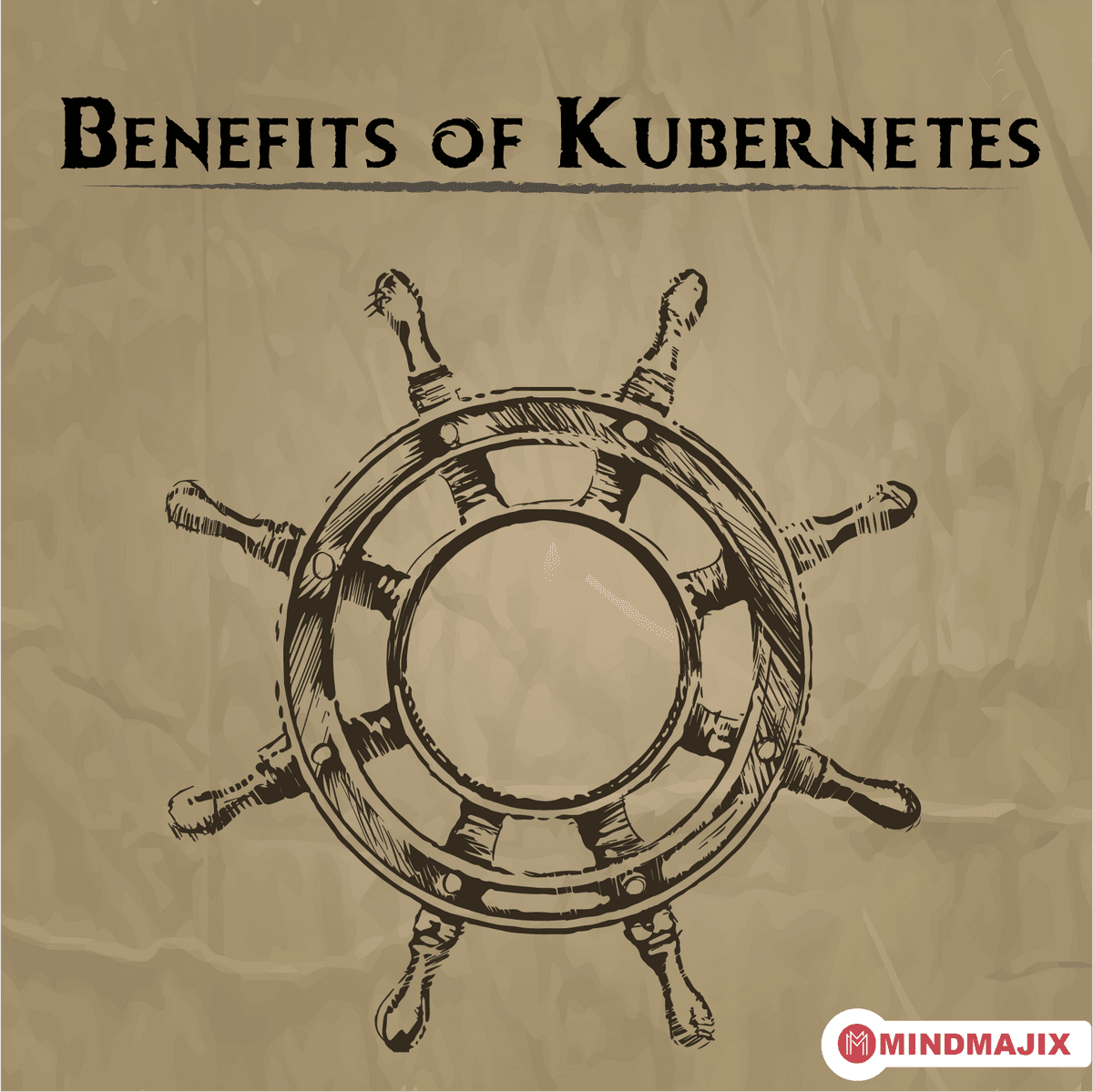- Home
- Blog
- Kubernetes
- Kubernetes Ingress

- Kubernetes Architecture
- Kubernetes Deployment Vs Kubernetes Services
- Kubernetes Interview Questions
- Kubernetes Load Balancer Services
- Kubernetes Tutorial
- Kubernetes Vs Docker swarm
- Kubernetes Vs Openshift
- Kubernetes Overview
- Detailed Study On Kubernetes Dashboard
- What is Kubernetes?
- Cloud Deployment Models
- Fluentd Kubernetes
- Kubernetes Tools
- Kubernetes Projects and Use Cases
- How To Install Kubernetes on Ubuntu?
- Installing Kubeadm
- Kubernetes Secrets
- Kubernetes Storage Class
- Kubernetes Deployment YAML
- Install Kubernetes on Windows
- Kubernetes VS Openstack
- Kubectl Connect to Cluster
- Kubernetes Vs Terraform
- ECS Vs Kubernetes
- Kubernetes Pod Vs Node
Kubernetes has a wide and rapidly growing ecosystem and it has extensive support, services and tools. In the year 2014, the Kubernetes project was open sourced by Google. In this blog, we’re going to cover Kubernetes Ingress including what it is and a few of the concepts you will have to learn.
Before we understand what Kubernetes Ingress is, we will have some insight into what Kubernetes is.
What is Kubernetes?
Kubernetes is a portable extensible open source platform that is used in management of containerized services and workloads. Kubernetes helps in facilitating both automation and also declarative configuration.
Kubernetes Features
There are number of Kubernetes features and it is:
- A container platform
- A micro services platform
- A portable cloud platform and many more
A management window that is container centric is provided by Kubernetes and it choreographs networking, computing, and also storage infrastructure for the workload of the users. This helps in providing simplicity of platform as a service that has the flexibility of infrastructure as a service. It also helps in enabling portability throughout infrastructure providers.
Kubernetes as a platform
Kubernetes provides lots of functionalities. With the help of application specific workflows are streamlined so that velocity of the developer can be accelerated. The ADHOC often requires robust automation at scale and this is the reason why Kubernetes is designed in such a way so that it can serve as a platform which is required for building an ecosystem of components and also tools which makes it easier to scale delay and manage applications.
There is a label which allows the users to organize the resources according to their preferences. Then there is an annotation that allows the users to decorate resources with the help of custom information so that it can facilitate the workflows. This helps in process of checking state for the management tools.
There is Kubernetes control plane from which is built on same APIs which are available to developers and users. Also the users have the power to write their own controllers that includes schedulers.
[Related Page: Overview of Kubernetes]
Kubernetes Architecture
One of the Kubernetes architectures is node. This is a worker machine in Kubernetes which was precious named as minion. Depending up on the cluster a node can be a VM or a physical machine. Each node is managed by the master components and they have the services which are necessary for running pods. A node status will contain the following information
- Address
- Condition
- Deprecated
- Capacity
- Info
Master node communication
Another one of the Kubernetes architecture is master node communication. It is a fact that all each and every communication paths that start from the cluster to the master has its termination point at the API server. With the help of single or multiple forms of client authentication enabled, this API server is configured in such a way that it can listen to connections that are remote on an HTTPS port (443) which is secured. This happens in case of a cluster to master.
Now for the pathway of a master to cluster, there are mainly two types of communication paths. The first path consists of the API server to kubelet process which runs on each particular node in the cluster. The second path consists of the API server to any node, service or pod through the proxy functionality of the API server. Kubernetes is very much extensible and highly configurable. This is why there is no or little need of submitting patches on the Kubernetes project code.
[Related Page: Detailed Study On Kubernetes Dashboard]
Kubernetes Ingress
There is a lot of confusion regarding how Ingress works with Kubernetes does. So first let us have a clear idea of what Ingress means.
What is Ingress?
If you want to expose each and every public system traditionally you would want to create a load balancer. With the help of Ingress, you would be able to create a route request to the services. These route requests are based on the request path or host that centralizes a series of services into a single of a single entry point. Ingress can also be defined as an API object which helps in managing external access to the services in a form of a cluster which is typically an HTTP. Ingress can be used to provide load balancing; name based virtual hosting and also SSL termination.
Let's dig deeper into the details. Ingress is divided into two main parts i.e, ingress resources and ingress controller.
1. Ingress Resources
Ingress resource is defined as the way you would want requests to be routed to the services that are backing. The documentation that are based on Ingress resources are not bad. But for the purpose of listing to Kubernetes API for the Ingress resources and handle those requests which will match them, you will need the second branch of Ingress resources which are known as Ingress controller.
2. Ingress controller
Any system that is capable of reverse proxying is known as Ingress controller. It is also commonly known as Nginx. Also you should keep in mind that if you do not have a provider that supports load balancer services then you might want to create a Node port and then you can point to the nodes with a different solution that will reverse a proxy cable on the basis of routing requests that are to be exposed to the Node port for the Ingress Controller on each and every nodes.
Some of the terminologies that are related to Kubernetes Ingress
- Node: In a Kubernetes cluster a node is defined as a single virtual or physical machine.
- Cluster: This is defined as a group of nodes that is firewalled on the internet. These are ye primary compute resources that are managed by Kubernetes.
- Edge router: This is defined as a router which enforces the firewall policy of the cluster. It can be either a physical hardware or a gateway that is managed by a cloud provider.
- Cluster network: A group of links which can be physical or logical that will provide a communication within a cluster.
- Service: A service that is defined as a group of pods that uses label selectors are known as Kubernetes services. If they are not mentioned, services are thought to have virtual IPs that is only routed within the cluster network.
Pods and services typically have IPs that can only be routed by cluster network. That traffic that ends up at a router which is an edge router can be either forwarded or dropped elsewhere. In order for inbound connections to reach cluster services, there are certain sets of rules which are known as Ingress.
[Related Page: Kubernetes Deployment Vs Kubernetes Services]
Benefits of Kubernetes
Kubernetes was built by Google and it was based on the experience which involves running containers in production and the success of this relies much on the involvement of Google. These are the four main benefits of using Kubernetes.

1. It is an infrastructure framework
Kubernetes provides core capabilities for containers that give the facility of eliminating infrastructure lock-in. The core capabilities for the containers are provided without imposing any kind of restriction. This is done by providing a combination of features inside the Kubernetes platform that include Pods and services.
2. Kubernetes provides management through modularity
With a clear separation of concerns, applications are divided into smaller parts that are allowed by containers. An individual container image that is provided by a straying layer allows us to rethink how to build applications that are distributed. This type of modular process enables a faster development by smaller and also by more focused teams. This will allow the process of isolation of dependencies. But it cannot be done through container alone and you will need a system for the purpose of orchestrating and integrating the modular parts and this is achieved by the use of Kubernetes which uses pods. The term service in Kubernetes means that it is used to group a number of pods which can perform the same functions. Services can be very easily configured for the purpose of observability, discoverability, horizontal scaling, and also load balancing.
[Related Page: Kubernetes Interview Questions]
3. The benefit of deploying and also updating software at a scale
The emergent of DevOps has increased the speed of the building and testing process but this method is not supported by all frameworks. This model is supported by Kubernetes with the help of Kubernetes controllers.
Kubernetes also simplifies certain deployment operations that are really helpful for the developers of modern applications.
Kubernetes does not restrict those supported language rules times and dictates application frameworks. A wide variety of workloads is supported by Kubernetes and it also includes stateful, stateless, and also data processing workloads.
4. Kubernetes also lays the foundation for the cloud-native apps
The cluster on Kubernetes can run on EC2 and it can also integrate with certain services like Amazon elastic block storage, auto-scaling groups, elastic load balancing, and many more. Kubernetes is very popular because of the innovation, architecture and also the huge open source e community that surrounds it. You will also be able to derive the maximum amount of utility from the containers by using Kubernetes. It helps in building cloud-native applications and these applications will run anywhere. It makes a breakthrough for the purpose of DevOps since it will allow keeping track of the requirements of modern software development. Kubernetes is indeed a very efficient model for the purpose of application development and also operations.
 On-Job Support Service
On-Job Support Service
Online Work Support for your on-job roles.

Our work-support plans provide precise options as per your project tasks. Whether you are a newbie or an experienced professional seeking assistance in completing project tasks, we are here with the following plans to meet your custom needs:
- Pay Per Hour
- Pay Per Week
- Monthly
| Name | Dates | |
|---|---|---|
| Kubernetes Training | Jan 06 to Jan 21 | View Details |
| Kubernetes Training | Jan 10 to Jan 25 | View Details |
| Kubernetes Training | Jan 13 to Jan 28 | View Details |
| Kubernetes Training | Jan 17 to Feb 01 | View Details |

Sandeep is working as a Senior Content Contributor for Mindmajix, one of the world’s leading online learning platforms. With over 5 years of experience in the technology industry, he holds expertise in writing articles on various technologies including AEM, Oracle SOA, Linux, Cybersecurity, and Kubernetes. Follow him on LinkedIn and Twitter.





